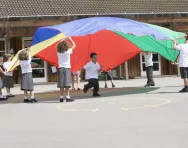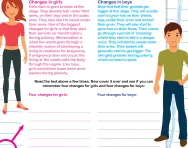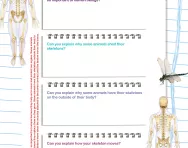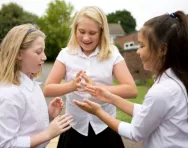TheSchoolRun.com closure date
As we informed you a few months ago, TheSchoolRun has had to make the difficult decision to close due to financial pressures and the company has now ceased trading. We had hoped to keep our content available through a partnership with another educational provider, but this provider has since withdrawn from the agreement.
As a result, we now have to permanently close TheSchoolRun.com. However, to give subscribers time to download any content they’d like to keep, we will keep the website open until 31st July 2025. After this date, the site will be taken down and there will be no further access to any resources. We strongly encourage you to download and save any resources you think you may want to use in the future.
In particular, we suggest downloading:
- Learning packs
- All the worksheets from the 11+ programme, if you are following this with your child
- Complete Learning Journey programmes (the packs below include all 40 worksheets for each programme)
You should already have received 16 primary school eBooks (worth £108.84) to download and keep. If you haven’t received these, please contact us at [email protected] before 31st July 2025, and we will send them to you.
We are very sorry that there is no way to continue offering access to resources and sincerely apologise for the inconvenience caused.
Growing pains explained

What are growing pains?
Nobody really knows what growing pains are, but there are various theories about it. The theory I like is that as bones grow, things get stretched in the process. Some people think it’s due to loose or tight joints, but there isn’t a definite opinion as to which one is right.
Where do growing pains occur?
Growing pains occur on both legs rather than just one. They are around the joint rather than in it, and tend to be concentrated around the calves and lower leg region.


Boost your child's maths & English skills!
- Follow a weekly programme
- Maths & English resources
- Keeps your child's learning on track
What ages are growing pains at their worst?
Growing pains usually affect children between ages 5-13. Attacks can last a few minutes or hours, and they can recur at any time during this age range. They’ll stop when the child stops growing.
Do all children experience them?
They don’t, but those who do have growing pains when they’re small will get them again as they grow. And, equally, if a child didn’t have growing pains when they were very young, it’s likely that they won’t have problems with them when they’re older.
How are growing pains different from other pains?
Growing pains are related to a physiological process (so, a natural function of the body), and are bilateral rather than unilateral – they will involve both legs rather than just one or the other. Growing pains aren’t considered to be very serious, and there are some easy ways to help children manage the pain.
Why do they hurt so much?
This depends on the mechanism of the pain. Because nobody knows what growing pains are exactly, it is thought that the pain could come from overuse, muscles being strained, or perhaps tendons being stretched. Basically, there is pain because the tissues involved have pain fibres in them.
What can I do to help my child?
Massaging the areas that hurt will help, as will anti-inflammatories such as paracetamol and children’s painkillers. Some children with growing pains see physiotherapists for stretching exercises.
Should I see my GP about them?
It’s almost always worth discussing this with your GP, as it’s not safe to assume that all leg pain will just be growing pains. If there is something else going on, it’s best to find out straight away. GPs are very experienced with this, and children are rarely sent to hospital because of growing pains. Your GP can refer you to a physiotherapist if necessary.
Dr. David Shortland is from the Royal College of Paediatrics and Child Health.








